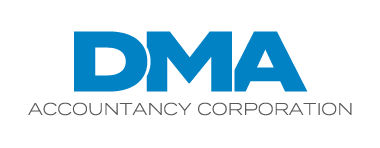Certain types of assets are written off over a period of several years (i.e. rental homes, improvements to leased property, business vehicles, business computers, business machinery and equipment, and more).
If you own investment properties or have a business then your prior tax preparer more than likely created a depreciation schedule. A depreciation schedule will show your new preparer how to enter these carryforward items on your return, which generally needs to be where your last tax professional (or self-preparation software) left off.
What does my depreciation schedule look like?
Depreciation schedules may look a bit different depending on the software used, however, they generally will include the following information:
- The date the asset as placed in service.
- The description of the business asset (i.e. computer, office desk, printer)
- The prior depreciation deduction taken on the asset.
What can you do?
- Start by checking last year’s return. If it is included, provide it to your new tax preparer.
- You checked last year’s return, but it’s not included.
- How do you get a copy of the depreciation schedule?
- Call your prior tax preparer and request a copy of all depreciation schedules (Federal, Book and AMT)
- If you self-prepared your prior income tax return, login to your online software and print a complete copy of your return that includes all pages and schedules.
- How do you get a copy of the depreciation schedule?
Why didn’t your former tax professional include it with the tax return?
Sometimes tax professionals don’t include them as a way of making it more difficult for you to leave their firm. Tax professionals know that you can’t complete your next year’s tax return accurately on your own, or with another tax professional without a copy of the depreciation schedules. Some tax professionals will deliberately set their software to a default setting of excluding the depreciation schedules when the return is printed.
Is it ethical for my former tax professional to refuse to provide a depreciation schedule?
No. IRS Circular 230 Section 10.28 states that a “practitioner must, at the request of a client, promptly return any and all records of the client that are necessary for the client to comply with his or her Federal tax obligations.” Our firm considers a deliberate exclusion of the depreciation schedules to be an unethical practice and always include them with tax returns that we prepare.
Can your new tax preparer request the depreciation schedules from your former tax preparer?
No. Tax preparers are bound by certain IRS codes and regulations. Tax preparers are prohibited from disclosing tax return information to third parties, including other businesses, unless the taxpayer has specifically authorized such disclosure in writing.
What is the difference between the Form 4562 Depreciation and Amortization and a depreciation schedule?
Form 4562 includes only annual totals. A depreciation schedule has each asset broken down by date placed into service. Form 4562 can give a tax preparer an idea of the fixed assets placed into service, but it is not a substitute for a depreciation schedule.
Can you complete my tax return without it?
Yes, in some cases you can recreate a depreciation schedule. However, it is advised to make every effort to obtain the depreciation schedules from your prior tax professional. Sometimes reminding your prior tax professional of their circular 230 obligation is necessary.
Contact us if you are looking for a new tax professional to complete your income tax return.


Recent Comments